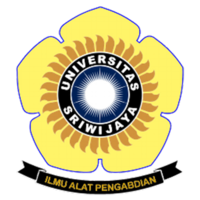FLOOD CONTROL IN THE SEKANAK RIVER OF PALEMBANG CITY
Abstract
Floods during the rainy season has become routine events in several cities in Indonesia. Various reasons to trigger the occurrence of flooding, among other drainage network system capacity is decreased, increasing water flow, or a combination of both. The capacity of the drainage channel has been calculated based on the design criteria to accommodate the flow of water occurs so that the area is not experiencing inundation or flooding. The reduced system capacity due to, among others, many precipitates, physical damage or their network systems and illegal buildings on the system network. While the cause of the discharge increases, among others, high rainfall out of habit, changes in landuse, environmental damage to the basin in a region. Cases like mentioned above also occur in Sekanak Sub-basin, so it is necessary to study the drainage network performance evaluation system based on the concept of sustainable drainage based on community participation. Good and bad, high and low of the drainage network system performance is largely determined by community participation in management, especially with the lack or absence of funds from Palembang city government for the management of drainage network system. Drainage system performance can be evaluated from the technical aspects as well as non-technical. One technical aspect is the frequency analysis to look at the picture unit hydrograph. Analytical results from this study may be that the maximum flow of 25 m3 /sec at peak hours at the time of 4.8 hours and then slowly starting to go down at a time to 24 hours. The others aspect is Social construction problems can be solved by Public Participation approach, with the Government acting on the principle of fair, development activities carried out with transparency and attention to the needs of the community.Social problems occurring both at the pre-construction stage (land acquisition and resettlement), construction (procurement and mobilization of labor, mobilization of heavy equipment and construction materials and equipment operations) and post-construction can be anticipated by social engineering forming between Other identification of community character and institutions, socialization, public consultation, community gathering and community
Full Text:
ASP-028Article Metrics
Abstract view : 236 timesASP-028 - 801 times
Refbacks
- There are currently no refbacks.
E-ISBN 978-979-587-734-9





